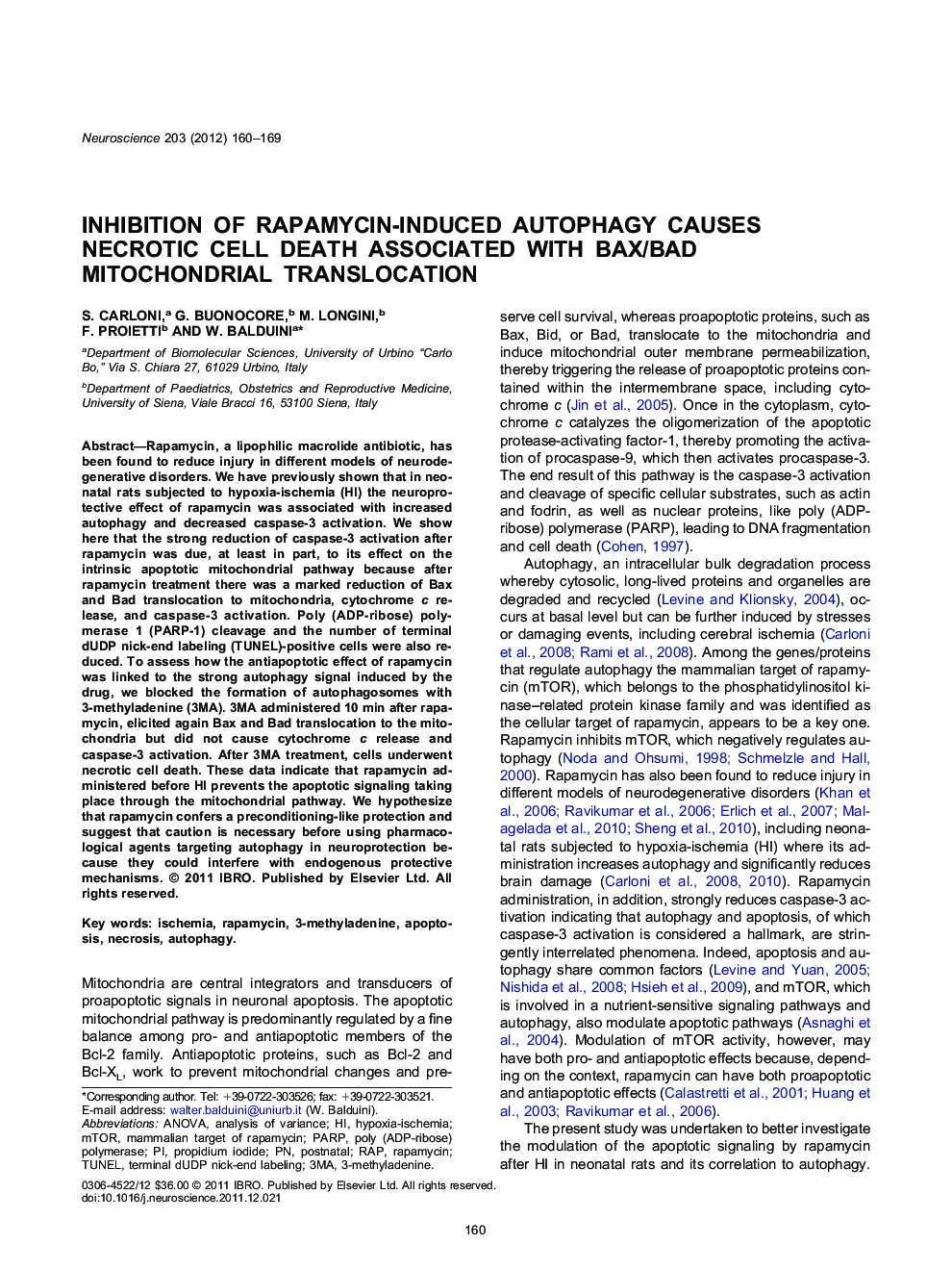| Article ID | Journal | Published Year | Pages | File Type |
|---|---|---|---|---|
| 6275761 | Neuroscience | 2012 | 10 Pages |
Rapamycin, a lipophilic macrolide antibiotic, has been found to reduce injury in different models of neurodegenerative disorders. We have previously shown that in neonatal rats subjected to hypoxia-ischemia (HI) the neuroprotective effect of rapamycin was associated with increased autophagy and decreased caspase-3 activation. We show here that the strong reduction of caspase-3 activation after rapamycin was due, at least in part, to its effect on the intrinsic apoptotic mitochondrial pathway because after rapamycin treatment there was a marked reduction of Bax and Bad translocation to mitochondria, cytochrome c release, and caspase-3 activation. Poly (ADP-ribose) polymerase 1 (PARP-1) cleavage and the number of terminal dUDP nick-end labeling (TUNEL)-positive cells were also reduced. To assess how the antiapoptotic effect of rapamycin was linked to the strong autophagy signal induced by the drug, we blocked the formation of autophagosomes with 3-methyladenine (3MA). 3MA administered 10 min after rapamycin, elicited again Bax and Bad translocation to the mitochondria but did not cause cytochrome c release and caspase-3 activation. After 3MA treatment, cells underwent necrotic cell death. These data indicate that rapamycin administered before HI prevents the apoptotic signaling taking place through the mitochondrial pathway. We hypothesize that rapamycin confers a preconditioning-like protection and suggest that caution is necessary before using pharmacological agents targeting autophagy in neuroprotection because they could interfere with endogenous protective mechanisms.
â¶Rapamycin reduces injury in neonatal rats subjected to hypoxia-ischemia. â¶Neuroprotection is associated with increased autophagy and decreased caspase-3 activation. â¶We show that reduction of caspase-3 activation results from inhibition of the mitochondrial apoptotic pathway. â¶Blocking autophagy causes necrotic cell death associated with Bax/Bad mitochondrial translocation.
